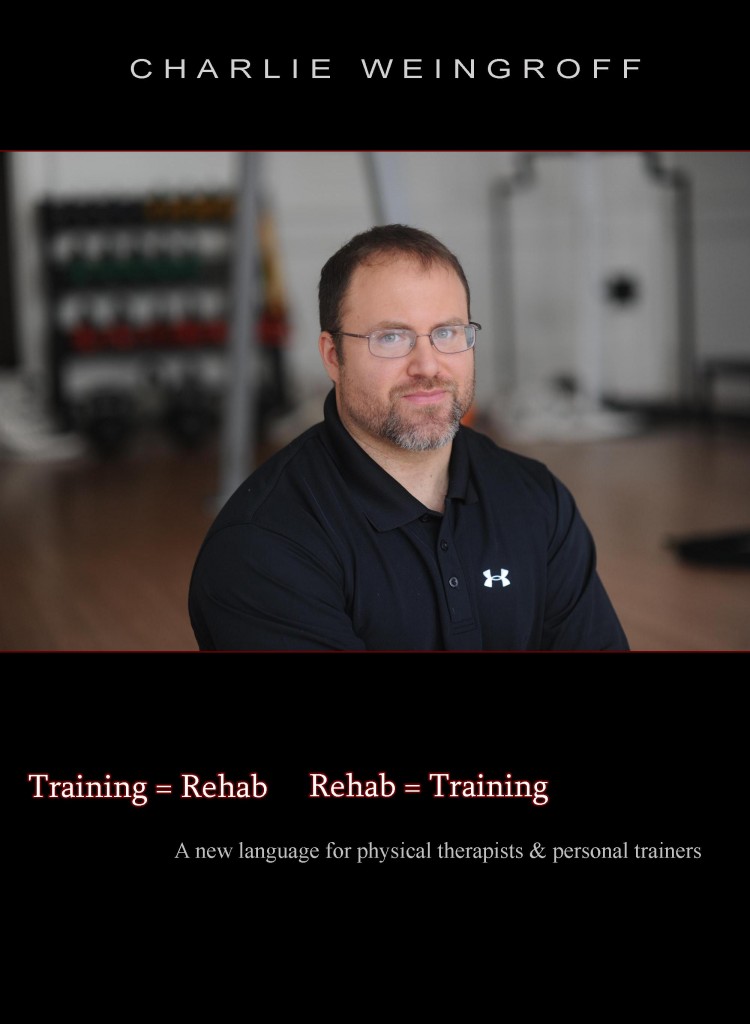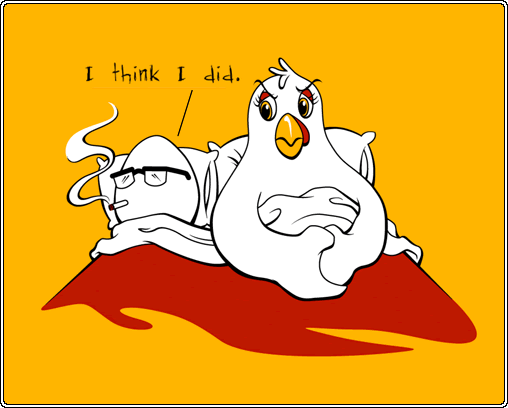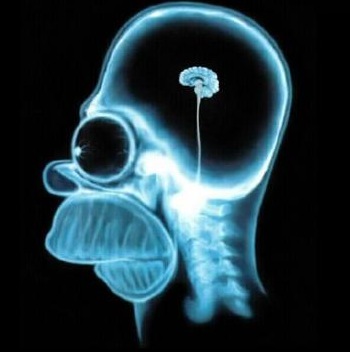On Monday, I went through some of the highlights of Charlie Weingroff’s new DVD set Training = Rehab, Rehab = Training.
The post dove into three big picture take home messages about human performance:
If you missed it, go to the link below to check it out:
>> Training = Rehab Rehab = Training <<
Since I put that up, I’ve gotten a few emails with similar questions. Basically, people want to know two things:
To address the latter, the entire premise of Charlie’s presentation is that there shouldn’t be a difference between how the human body is treated in a physical therapy versus strength and conditioning setting, at least not based on the setting alone. Instead, he contends, that these differences should be based on skill sets. As an example, if a practitioner is a qualified manual therapist, than he/she should do manual therapy. If not, then don’t. This could be in a PT setting; it could be in a training setting. Simple enough.
The overwhelming commonality in “training” and “treatment” (which is also training, since every stimulus we provide our bodies elicits an adaptation response) SHOULD be built upon the immutable laws of human movement, which he details in-depth in his DVDs (especially the first two). He provides the example of his own setting, where his “physical therapy” work looks substantially more like training than it does traditional PT work.

To get back to the original question of whether Training = Rehab, Rehab = Training is more appropriate for physical therapists or strength and conditioning professionals, the answer is “yes!” In my opinion, maximizing my understanding of how the human body moves and functions is the first step toward optimizing these processes for maximal performance. Charlie describes the complexities of the interaction between functional anatomy and biomechanics brilliantly. This understanding applies to all training and rehab settings.
This transitions us nicely into the first question-“Is this a resource I should move to the top of my ‘to get’ list?” You can probably guess my answer here. I can empathize with the people that emailed me with this. Frankly, there is SO much information out there right now that it’s easy to become overwhelmed, both in terms of time and finances. I, like many of you, am responsible for funding all of my own continuing education endeavors. In the last few years, I’ve spent in excess of $15,000 on continuing ed stuff, which for a while was putting a damper on the quantity of food I had in the house! I understand that for many it’s going to come down to an either/or situation. In my opinion, you’d be crazy NOT to pick up a copy of Training = Rehab, Rehab = Training as soon as possible. It will likely lead to significant changes in the way you train and/or rehab your athletes, which I can’t say with nearly as much enthusiasm for much of the other stuff out there.
With that said, let’s transition into some content from Charlie’s DVDs:
The Chicken or the Egg
Charlie highlights the fact that pain changes everything. If an athlete is in pain, it’s going to change the way that both local and global muscles function to produce movement. In other words, pain changes muscle firing patterns. Coming back to the idea that every movement creates a training stimulus to the body, it’s important to minimize (if not eliminate) the number of movements athletes perform while in pain. This comes back to Michael Boyle’s profoundly simple idea of “rehabbing” athletes-if it hurts, don’t do it.
Charlie also points out that, in the presence of pain, you rarely know if a faulty movement pattern caused the pain or if the pain is causing the faulty movement pattern.

Who came first?
The exception to this is if you’ve been working with an athlete for an extended period of time when they’ve been pain free, but exhibited a relevant movement abnormality that, over time lead to them getting hurt. In many situations, ESPECIALLY with in-season athletes that get banged around all the time, this is not the case. It’s important to keep this in mind in all training situations, but Charlie also points out that pain anywhere makes the findings of the Functional Movement Screen irrelevant. After all, how can you assess movement pattern quality if pain is changing the underlying neuromuscular patterns that contribute to normal movement?
The Truth about Training Professional Athletes
There’s a longstanding trend, especially amongst youth athletes, to want to train exactly “how the pros do”. The thought process is both logical and admirable-they’re the best athletes because they get the best training; because they’re the best, they work with the best strength and conditioning coaches. As you know, it is almost never appropriate for a youth athlete to work off a pro athlete’s training program because they lack the training foundation that most pro athletes have (amongst other reasons).
Charlie said something that really jumped out at me because it’s something I don’t think many people realize. With regards to strength and conditioning for professional athletes he said,
“Every person in this room would vomit if they saw some of the things that go on in professional sports.”
This highlights an important point-not only should people not blindly follow the programs of professional athletes because they likely aren’t ready for the demands those programs require, but they shouldn’t be following them because many times the program may be complete garbage! As with any job, there are great people in professional sports and there are, well, less-great people in professional sports.

Networking: The key to getting a job in professional sports
On Friday, I’ll be back with more insights from Charlie’s DVD set, including:
In the meantime, go to the link below to pick up your copy of Training = Rehab Rehab = Training!
Click here now to get your copy >> Training = Rehab, Rehab = Training
To your success,
Kevin Neeld
P.S. Last chance; this starts this week! 2011 Sports Rehab to Sports Performance Teleseminar